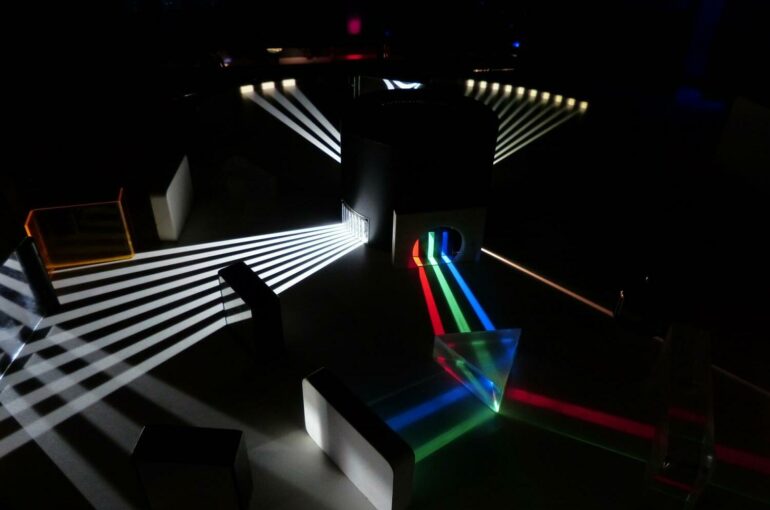Optical interference is not only a fundamental phenomenon that has enabled new theories of light to be derived, but it has also been used in interferometry for the measurement of small displacements, refractive index changes, and surface irregularities. The Michelson interferometer is a commonly used interferometer, by which the equal-inclination and equal-thickness interference fringes of light can be easily observed. Historically, this interferometer has been used in many famous physical experiments, such as the Michelson-Morey experiment and gravitational wave detection.
In a new paper published in Light Science & Application, a team of scientists led by Professor Bao-Sen Shi and associate professor Zhi-Yuan Zhou from CAS Key Laboratory of Quantum Information, University of Science and Technology of China, has demonstrated a special equal-inclination interference by using non-monochromatic photons in a Michelson interferometer, manifested as the number of ring-like fringes increasing much more rapidly with increasing optical-path-difference (OPD) than the corresponding fringes for equal-inclination interference.
The photons used in their interferometer are generated by spontaneous parametric down-conversion (SPDC) in a second-order nonlinear crystal, in which a higher-energy pump photon splits into a pair of lower-energy photons with a certain probability. In this work, the observed interference is closely related to the special frequency-angular spectrum of photons generated from the SPDC process: The photons have a large divergence angle, and the frequency of the photons varies with increasing divergence angle. The principle of the interference is that the frequency-different photons emitted from the crystal have different divergence angles, and each divergence angle corresponds to a unique frequency combination; therefore, photons with different frequencies have different phase differences between the two parallel plates, and finally have different results of constructive or destructive interference, which forms bright or dark ring-like fringes on the detection plane. The scientists refer to this interference as angular-spectrum-dependent (ASD) interference because it is caused by a combination of interference patterns of different angular components.
The principle and phenomenon of the ASD interference look similar to those of the traditional equal-inclination interference: They both have ring-like fringes, the phase difference inducing bright or dark rings is dependent on the angle, and the number of rings is dependent on OPD; however, both theoretical and experimental results show that the number of ring-like fringes increases γ times faster with increasing OPD than the corresponding fringes for common equal-inclination interference. Regarding the interference fringes with different arm differences in the experiment, under their experimental conditions, γ is of order 27. The phenomenon can be also parameterized using an equivalent wavelength, which under their experimental conditions is about 1/27 of the real wavelength of photons. The physical meaning of the equivalent wavelength here is that the ASD interference fringes are the same as those from a traditional equal-inclination interferometer in which the wavelength of the photons has this value. The theoretical model in this paper shows that these parameters can be further improved by adjusting the experimental parameters.
An advantage of the ASD interference is that the sensitivity can be increased γ-fold when one uses this interferometer to measure small displacements or refractive index changes by recording the variation of fringes because in these cases, greater variation in the fringes indicates better sensitivity for OPD. Another advantage of ASD interference with a large value of γ is that the point at which the zero OPD can be determined more accurately and thus the optical path measurement accuracy can be improved, which is ± 0.54 μm by fitting their experimental data.
More information:
Chen Yang et al, Angular-spectrum-dependent interference, Light: Science & Applications (2021). DOI: 10.1038/s41377-021-00661-z
Provided by
Chinese Academy of Sciences
Citation:
Research team demonstrates angular-spectrum-dependent interference (2021, December 27)



